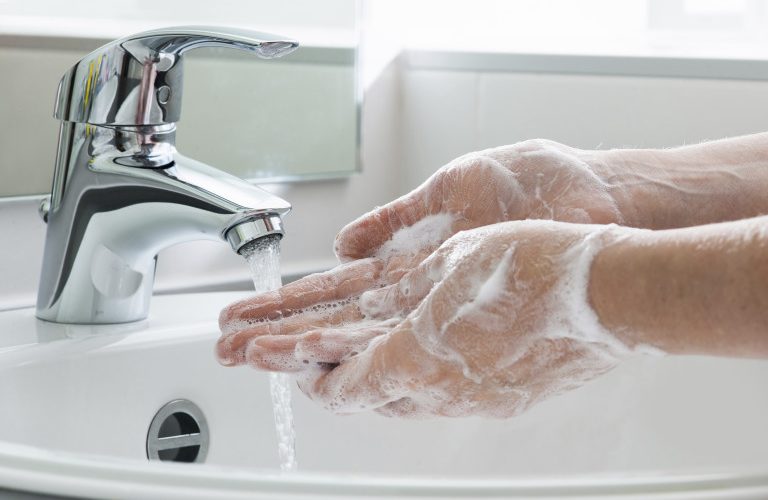Proper handwashing is one of the most effective ways to reduce the spread of germs in a group care setting. By taking the time to teach correct handwashing to the children in your care, you help build a habit that will impact their health for the rest of their lives. Here are tips and ideas for teaching this essential skill to the children in your care.
Make it Routine
Young children learn best through repetition and routine. Be sure you allow time for handwashing and provide reminders during transitions throughout the day. With consistency, children will get into the habit of washing their hands when it becomes a regular part of their daily routine. You may even notice fewer absences from your program due to illness. You’ll know it’s really become routine when children begin reminding each other to wash their hands.
Use Visuals
Post colorful pictures and posters to help you and your children remember how and when to wash hands. The Centers for Disease Control and Prevention (CDC) offers free printable handwashing posters that are available in multiple languages on their website. You can also make your own personalized handwashing poster using photos of the children in your care.
Start Early with Infants and Toddlers
Even young infants should have their hands washed regularly to limit the spread of germs. Caregivers can assist young infants with handwashing at a sink by safely cradling them in one arm. For older infants and young toddlers, who can stand but not wash independently, a low sink or sturdy step stool helps them reach the sink and begin to manage handwashing more independently, although they still need supervision and guidance to make sure they follow the proper steps.
Use hands-on activities with preschoolers
Hands-on activities engage children’s attention and extend their understanding of concepts of germs and handwashing. Try these activities with preschoolers in your care:
- Glitter Germs — Explain to children that germs are tiny particles that can make our bodies sick. Explain that when we touch objects and things throughout the day as we play, we get germs on our hands. Place a tray sprinkled with glitter for children to touch and get “germs” on their hands. Have the children try to get the “germs” off using just a paper towel. Explain that handwashing gets the germs off so we stay healthy. Model the correct handwashing procedure, and show the children how all the germs are gone after washing. Have children take turns washing the “germs” off their hands.
- Handwashing Sequencing — Sesame Street in Communities offers an activity guide with a handwashing sequencing activity. Encourage children to cut out the handwashing steps and place them in the correct order. As children sequence the handwashing steps, ask them to explain their thinking about how they ordered the pictures.
Read Books About Handwashing with Children of All Ages
Use books to introduce the importance of handwashing and to spur conversation with the children in your care. Included are a few titles:
- Germs are Not for Sharing/Los Germenes No son para Compartir by Elizabeth Verdick
- Those Mean Nasty Dirty Downright Disgusting – But Invisible Germs by Judith Anne Rice
- Germs Make Me Sick by Melvin Berger
- The Ten Potato Scrub by Marjorie T. Cooke
- Buddy Bear’s Hand Washing Troubles by Marjorie T. Cooke
- Your Skin and Mine by Paul Showers
- Wash Your Hands! By Tony Ross
- Oh, the Things you can do that are Good for You by Trish Rabe
Get Families Involved
Let families know how you are building handwashing routines in your program. Share information from recognized health organizations to help families learn about health practices and reinforce these habits at home. Visit the CDC for information and a printable flyer to share with families. This makes a great home and program connection and promotes the extension of healthy habits across settings, throughout the child’s day.
Have a story you’d like to share? We’d love to hear how you build healthy handwashing habits with the children in your care. Please send us an email with your ideas and story to: QualityFirst@firstthingsfirst.org.
